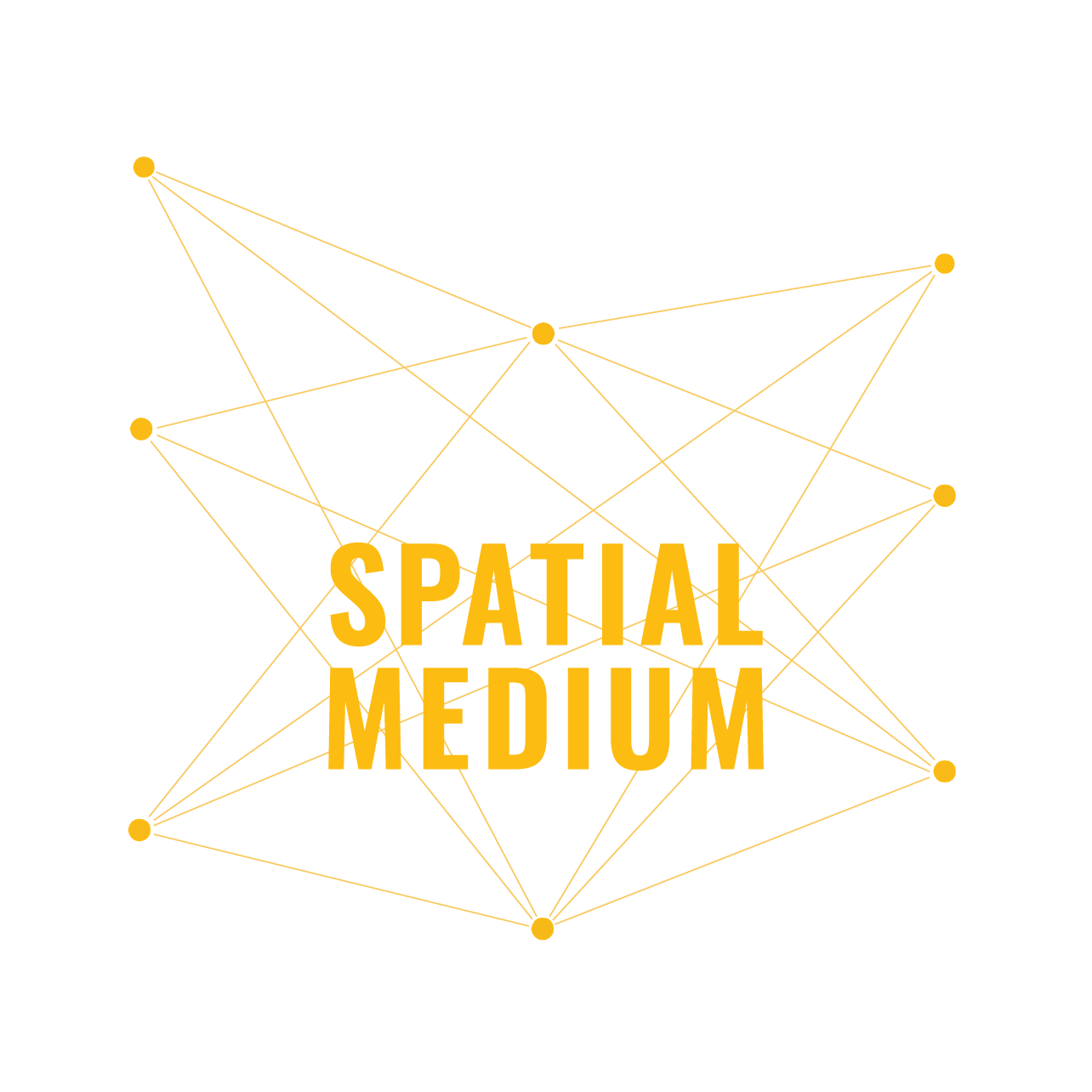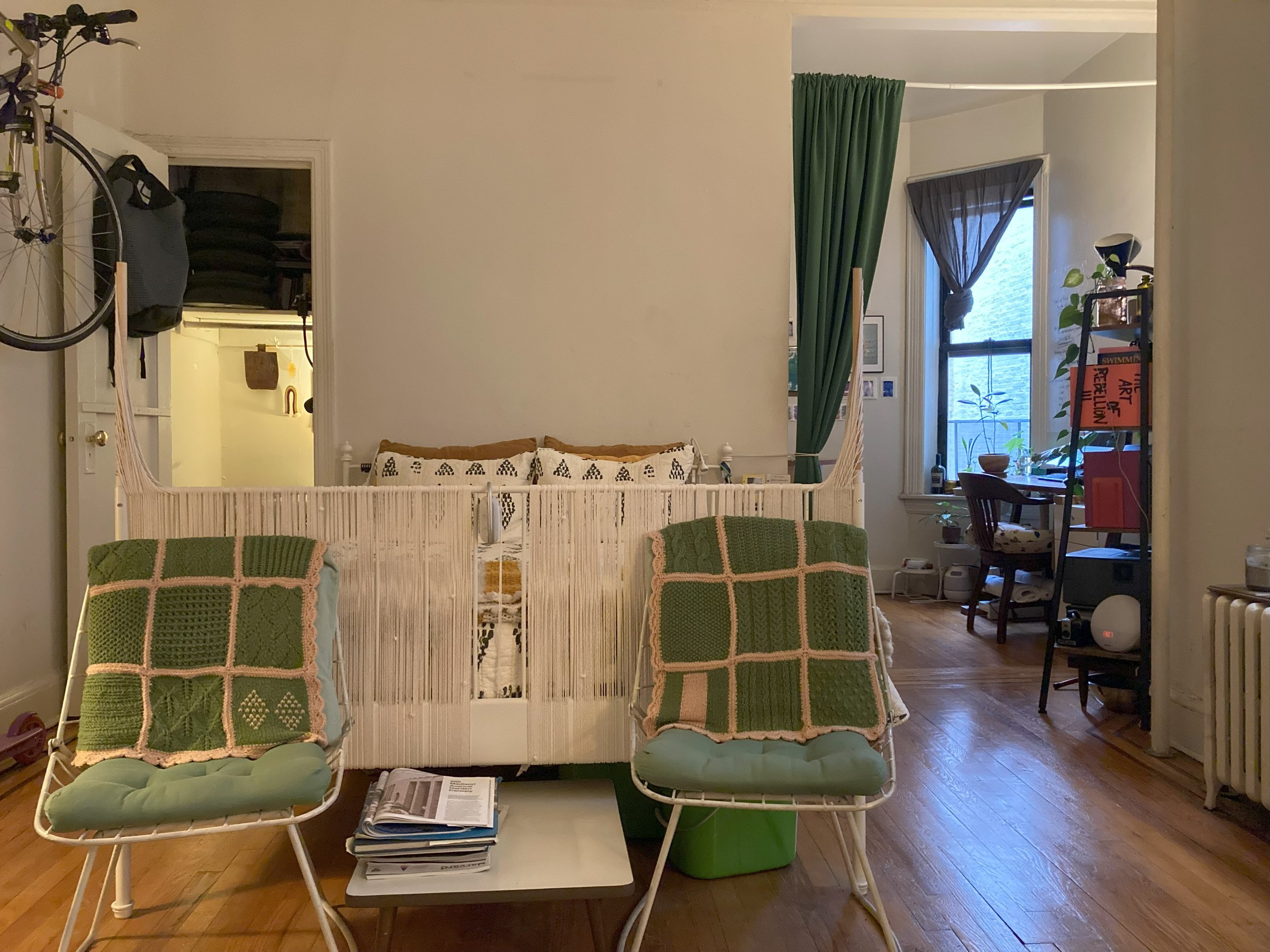(noun) - something that indicates or fixes a limit or extent
Oh boy, week 2 and already in the thick of it! Boundary. Yikes!
Let's keep it simple and talk about physical boundaries first, shall we?
Physical boundaries can be really easy to see and experience - they are solid walls, glass walls or glazing, movable partitions, fences, and a myriad of hybrid combinations. They can affect how we sense space, what access is allowed, and the way we communicate. For example, a solid wall will keep light/vision/access at bay but depending on how it is constructed, may allow unwanted sound and smell through. Conversely, a neighbors fence may deny access or define property while still allowing for communication, senses, and connection between inhabitants.
Let's take another look at the main space in my studio for two quick DIY examples in the photo below.
The first, as you may recall, is that I created a fixed boundary with the bedframe/sofa combo between my "bedroom" and my "living room". Obviously they are in the same physical space but the delineation helps me organize my life. The item that I didn't talk about before is the foot of the bedframe. Earlier this year, I decided I wanted to try to create a more solid visual boundary between my “living room” and “bedroom” - when I am sitting on my sofa, I don’t want to see the surface of my bed. I also wanted something textured behind the two metal chairs. I decided to try filling in the gaps of the bedframe with a twine installation…BINGO! Texture and visual boundary achieved. The wood dowels on either end were added to carry that visual boundary vertically in the space without overpowering it with something solid or unyielding.
The second “boundary” I implemented in this space is the movable green curtain boundary between my "living space" and my "work space". Again, they are technically in the same open room, however, the simple act of pulling the curtain shuts my brain off for the night. And that is invaluable. (Bonus, the curtain pulled also creates a smaller footprint in the summer when my AC unit is cooling the space.)
And then there are the physical boundaries that are implied. What does this mean exactly?
The photo below is a picture I took of the Lakeside Skating Rink in Prospect Park one winter day. You can see the large roof overhang that protects the sheltered skating rink below. What I want you to pay attention to is the line where the snow disappears, almost directly mirroring the roof overhang above. This is what I consider to be an implied boundary. There is nothing to stop sound/smell/vision/light/access, technically everything is still outside. However, and especially with the presence of precipitation, you can clearly see that the group arriving will be within the space of the skating shelter in a few paces.
(psst…the space in the above photo between the vertical dowels is also an implied physical boundary…did you catch that??)
People impose implied physical boundaries in space as well. A few years ago, I attended an art performance at The Shed in NYC and experienced a waiting period prior to top of show. There was a "lobby" space provided for people to wait and I watched as about 70 people filtered in behind me over the course of 30 minutes. I say "behind me" because as I was walking around in center of the space, each person (or group of people) kept to the walls. Clearly they felt that the middle of the space was not for them even though there were no rules that said you could not be in the middle. It was fascinating to witness, almost as much as the performance itself, and I had to document it in the plan diagram* below!
Pay attention to your surroundings this week - do you move through any implied boundaries? Do you participate in socially implied boundaries or do you, like me, completely buck the trend? Simply observe...and delight in what you notice.
(*A plan is like a birds-eye-view or a map of the spaces. It is typically cut at 4'-0" above the floor line to include door openings, etc. Mine is more diagrammatic so I've utilized single lines and text for clarity.)
Ah now. Personal, intangible boundaries. Deep breath, stay with me here.
As opposed to the physical boundaries, personal boundaries are sometimes not clearly visible (although they can be...example, crossing your arms or stepping back when a close talker encroaches your physical space). If you are anything like me, personal boundaries can be challenging to create, practice, and uphold. But with the upcoming holiday season and the potential for boundaries to be pushed (or ignored completely) I believe it's important to nudge them into the light.
[A quick note: if talking about personal boundaries is new to you, here is a resource I've found to explain them in a very basic way (meaning, this is not exhaustive!). for clarity, I am not a trained therapist. please consult a licensed professional if you are struggling with creating healthy boundaries. My therapist is personally on speed dial…] #realtalk
I find that my personal, intangible boundaries are easier to achieve when I attach a physical, spatial component to them. It doesn't have to be much. Maybe relocating outside for a moment to take a quiet breath and ground yourself. Darkening a room to de-sensitize to avoid overwhelm. A sprint down the block that shakes loose courage to express your needs to a loved one. Perhaps volunteering to take a drive and grab that forgotten ingredient to regroup before company arrives. I find that keeping my hands busy so my body has an outlet for agitated energy helps a lot.
There are also solely intangible ways to create personal boundaries. “No thank you” is one that comes to mind for any situation that does not feel ok. A gentle reminder here that “no” is a complete sentence (because boundaries need no explanation!). And one of my favorites - not engaging at all - is a great way to hold intangible boundaries. Refocus that energy on something else and move on.
Regardless of what creating and holding personal boundaries consists of for you, please know that it is a practice. Just like our physical needs and spaces, they will shift and change as you shift and change. There will be moments you knock it out of the park and moments you fail to try again another day. Be kind to yourself either way this holiday season and beyond. This is a muscle that you need to develop over time. One more deep breath...
JOURNAL PROMPTS
What does creating boundaries in your life mean to you? Is it primarily physical or intangible? When is it both?
What would creating a new boundary look/feel/sound in your life right now? does it feel stressful? Relieving?
Where do you feel you need to revisit your boundaries?
When do you tend to ignore, diminish, or remove your boundaries? Observe as you go about your day.
In what ways, physical and intangible, can you make space for healthier boundaries in your life? (This could mean a shift in your physical space, an expression of your needs, or getting curious about expectations.)
This wraps Week 2...thank you for taking time to explore spacemaking from a place of boundary!
If you feel inspired to share any takeaways, examples in your own home, or questions that came up for you, please access Spatial Medium on LinkedIn or Instagram. Please be sure to add #12weeksofspacemaking and tag @spatialmedium so I can see what you post!




